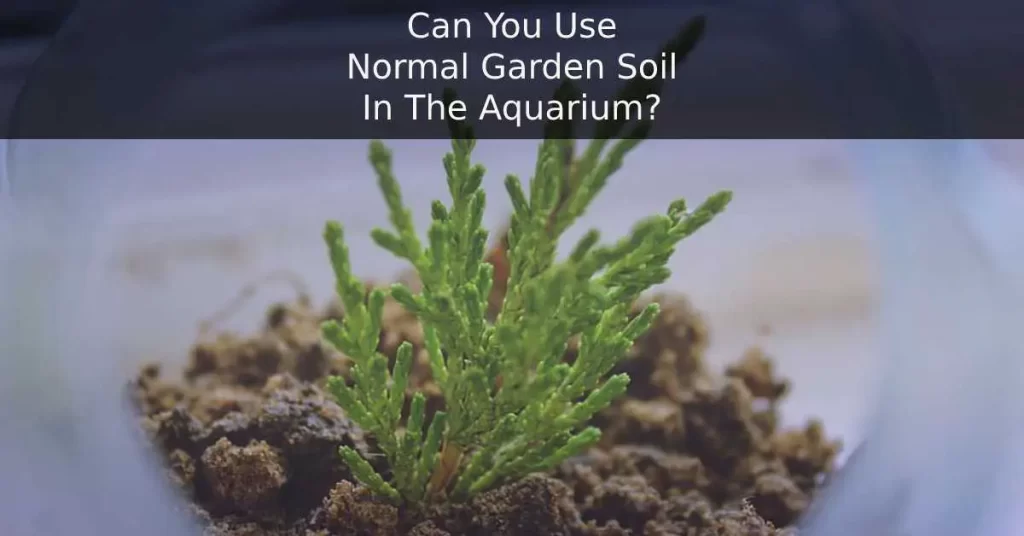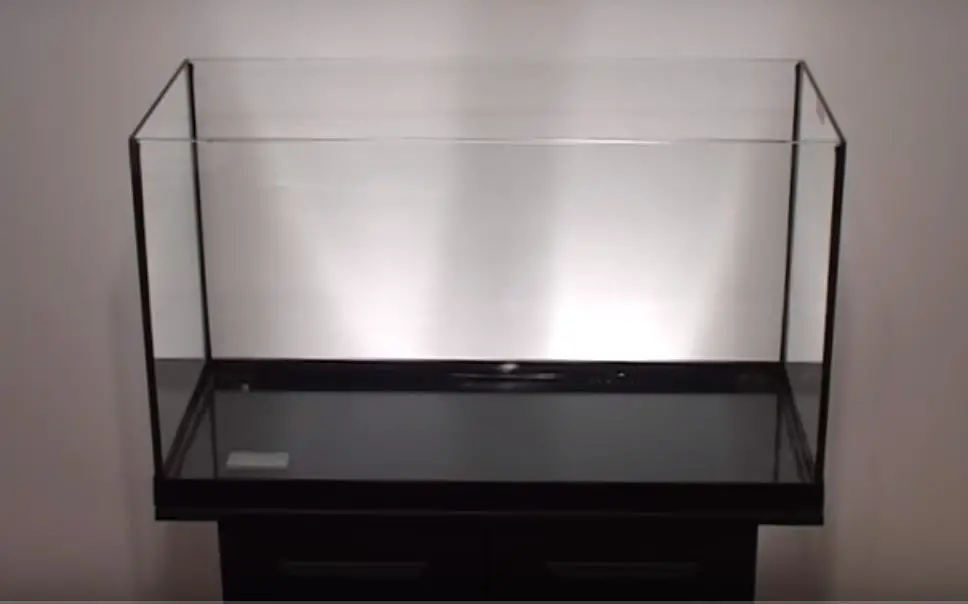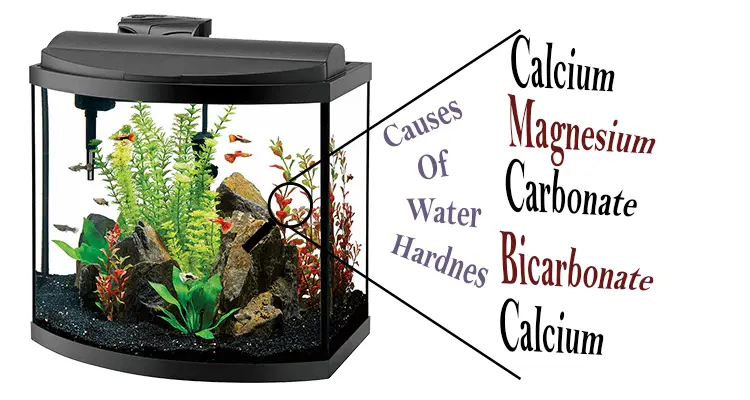Aquariums need various facilities to run smoothly. Even the decorations are an essential element in any home aquarium. The decorations in the aquarium consist of live or artificial plants, substrates, caves, gravels, showpieces, etc. Among all the decorations, people have a wide range of alternatives when choosing substrates. It is one of the best ways of using an exhilarating underground plant life in your aquarium. Amidst all the fields, the soil substrate helps to enhance your aquatic life more effectively. In this article, you will learn about if you can use normal garden soil in your aquarium or not.
Using gravel, sand, and other substrates do not quite flatter everyone, especially for those who prefer to keep live plantation in the aquarium. However, many people hesitate to spend money on something which they feel is easily available. You can create your aquarium soil with the right refurbishing.
For preparing a new aquarium, aquarium soil is used. It is a full lower layer that you can use without any other type of lower layer. You will find it easy to buy soil suitable for immediate use in an aquarium-like Amazonia Soil or other natural substrates for your live-plants. Find out in the article further the details
What is a Soil Substrate?
In simple terms, a soil substrate contains mineral particles, organic matter, inorganic matter precipitated, and microorganisms.
In other simple words, ‘Soil substrate is the material in which plants grow.’ This definition highlights the biological value of soil, and I believe that many aquarists overlook the vital importance.
Soil substrates use raw power already exploited by nature, and once your water is full, it uses the natural flow and cycles. If you do this right and soil substratum tanks should produce impressive results alongside their comparatively more energy-intensive counterparts.
It is achievable with little effort and minimal cost, even though it takes a little longer.
Potting Soil: Overview And How To Use In Aquarium?
Potting Soil is a medium in which crops, herbs, and seeds grow in a pot or other protective container. You can also identify it as potting soil or miracle soil.
Now, you cannot directly pour the potting soil or gardening soil into the aquarium. The potting soil can contain bacteria, beetles, larvae, etc. which can pollute and spoil the environment of the tank. You would not want that.
While using potting soil, you also have to consider the possibility of releasing nitrogenous compounds such as ammonia along with the nutrients for your plants.
A mixture of 20 percent loam, 10 percent grit, and 70 percent sphagnum moss peat is one formula that is successful. In basic terms, the loam peat mix includes plant nutrients, and the grain just provides additional structure, making the substrate grow more roots, water movement, transfers of nutrients, and gasses.
Garden Soil: Overview
Garden soil is being used extensively, but not all the garden soil is created equally. Once garden soils are submerged, they function differently. This typically just means that they do not perform so well as an aquatic substrate.
It is always the least toxic soil that provides the best conditions for development. Garden soils also have traces that can be harmful in life for aquatic insecticides and herbicides as well as other substances.
Can You Use Normal Garden Soil In Your Aquarium?
As I stated earlier, using a soil substrate is a prevalent procedure in an aquarium. Concerns on the use of normal garden soil in an aquarium cannot be avoided.
A suitable substrate material will significantly improve the performance of your live aquatic plants. However, it is not recommendable to use soil straight out of the garden because it is not organic and soil with inorganic materials can also kill fish in the aquarium. You will be able to use normal garden soil systematically. Either pick up a potting compost bag or pick up garden soil by a trowel and a bucket.
Related article: Things to know before buying an aquarium: The Placement, Idea, and Concept
Using Normal Garden Soil In The Aquarium
The fact that tank owners have a desire to plant live plants in their aquarium is undeniable. Having live plants in your tank can make a great implication for the aquascape. Live plants are more effective than artificial plants.
To know more about Nano Planted Aquarium Set up Guide, click here.
It is possible for you to use substrate other than soil in the aquarium. It is because the soil can contain specific nutrients that others may not provide.
In the case of using normal garden soil, you can use either organic potting soil or garden soil. It does not matter if you want to use regular soil for cost-saving purposes. Everyone tries to save some bucks. Make sure that you remove all the unnecessary foreign substances from the soil.
Requirements For Using Normal Garden Soil In The Aquarium
Before you add any of your potting soil or the garden soil to your tank, you first must have to prepare for certain equipment. Here is a list of the required equipment.
| Image | Best Products For Tetra | Link |

|
ZUZUAN Garden Tool Set, 3 Pack Garden Hand Shovels Aluminum Alloy Garden Trowels with Ergonomic Rubberized Non-Slip Grip, Included Trowel, Transplant Trowel and Cultivator Hand Rake |  |
 |
12 Pounds River Rock Stones, Natural Decorative Polished Mixed Pebbles Gravel, Outdoor Decorative Stones for Plant Aquariums, Landscaping, Vase Fillers |  |
 |
Redneck Convent Trapping Dirt Sifter – 9 by 7 Inch Trapping Sifter Metal Dirt Sifter for Trapping, Garden Sieve, Beach Sand Sifter |  |
 |
Carib Sea ACS05840 Super Naturals Crystal River Sand for Aquarium, 5-Pound |  |
 |
Wilton Perfect Results Premium Non-Stick 21 x 15-Inch Mega Baking Pan |  |
 |
Rubbermaid Commercial Products 2.5 Gallon BRUTE Heavy-Duty, Corrosive-Resistant, Round Bucket, Gray (FG296300GRAY) |  |
Trowel
A trowel is a small hand tool used to dig, apply, smooth, or push small amounts of viscous or particulate. Masonry trunk, garden trowel, and float trowel are common varieties.
Garden Sieve
This is a tool that will help you to remove the large lumps present in the soil. It will also help to separate leaf mold and compost. The result will leave you with fine soil particles perfect for the aquarium plantation.
Aquarium Sand Or Gravel
You will also require aquarium sand or gravel to mix it up with the garden soil. Both sand, gravel, and soil can be mixed in the aquarium. Make sure to use the sand and soil under the gravel.
Bucket
A bucket is just to make sure that you will transfer the garden soil from the trowel and bucket.
Baking Tray
Now, move the sifted soil to a baking tray and baked for 20 minutes at approximately 200 degrees Fahrenheit. This sterilizes the soil and kills all the living microorganisms, seeds, and unwanted residents.
How To Prepare Garden Soil For Your Aquarium?
Checking the preparation steps will take a little longer than the previous approach so that a few days before you plan to use your fresh soil. To use the garden soil in your aquarium, you should follow the points below to prepare the garden soil.
- First, collect your garden soil in a bucket.
- You will need to sift your soil from the garden sieve to remove the twigs, rocks, insects, etc. Make sure that the base of the tank is about 2-inch deep. Please ensure that the base of the tank is about 2-inch deep with the soil.
- After that, sprinkle the sifted soil on the baking sheets.
- As I have stated before, once you put the soil in the baking sheets, you will need to bake at 200°F for at least 20 minutes. This leads to sterilizing the soil. It kills any seeds, invisible residents, or microorganisms, which can damage your fish.
How To Prepare Potting Soil and Clay For Your Aquarium?
When you choose potting soil, the measures are a little different. You will not require the use of an oven. Make sure it is organically and chemically free when you buy your potting soil. Once more, you need enough to cover about 2-inch your tank base.
Test the preparation steps take a little longer than the previous method, so let your new soil substrate a few days before you plan to use it. One extra ingredient that you will need in the potting soil is the modeling clay—adding a good source of iron to the introduction of clay. This allows your plants to create solid, safe structures.
Steps for Soil Preparation
- Sift the potting soil into a big bucket to eliminate unwanted parts.
- Replace the bucket with water until approximately 2 inches from the soil.
- Mix the soil so that it is saturated.
- Before any further process, make sure that you soak the soil for at least a day or two.
- Drain the soil into your second bucket through the filter. Repeat the above steps.
- Drain the soil liquid after a second day or two
- It is widely dispersed over your surface and dry. It would be better sunny, or you can speed-up the drying using the oven procedure.
Place your tank floor with a layer of soil. Even if you lay the thin layer of the soil, then it can be proven very effective. Apply the soil over the top, a layer of gravel or sand. It keeps the soil from becoming disturbed and makes your lovely aquarium a tank of water. The roots of plants will enter the soil and its nutrients.
Load up slowly with water in the tank. To avoid stirring the substrate, it may be helpful if you pour the water down the sides. Like any other fish tank, it is necessary to cycle the aquarium.
Additional Tips and Warning
Even though using soils in your aquarium tank has an excellent benefit for the plant life in your aquarium, you might need to consider a few pointers.
- Never forget that soil determines the tank’s composition. Test and adjust the pH of your aquarium after cycling if you plan to retain highly sensitive fish.
- Either do not keep your fish or only begin to use sand or gravel if it is too acid or alkaline for the species in question.
- For years, some contaminants have been lingering in the soil. Do not use garden soil if you have recently relocated or did not plant organically.
- The charge for potting compost is less costly than killing your aquatic species.
- Plants soil is great in most cases. For the same cause, it is also excellent for algae, packed with nutrients. Prepare yourself for many algae, floating as well as covering surfaces, especially at the beginning.
You can further read How To Get Rid Of Algae In Fish Tank Naturally? and 30 Best Algae Eaters For Freshwater Aquarium for more information.
Aquascaping With The Soil Substrate
If this is the first time, the soil as a substrate can be the hardest step. In this stage, you will probably get pretty dirty. These measures consider fish that is already in the tank and attach substrates to add live plants.
You can add your fish to your tank after you have completed the aquascaping by following these steps. At this point, your soil must be ready for use.
Steps To Aquascaping With Soil Substrate
- Get your fish in a big container and fill it with the tank water.
- The next step is to transfer your fish into the container or tank.
- Attach your tank heater, air stone, and filter to the provisional fish tank. This ensures you conserve plenty of beneficial bacteria, and you will not have to refill tanks.
- Remove all the plastic and gravel castle you have and drain the original fish tank.
- Clean your tank very well as you can because placing your soil in a wet tank will make it watery and will sink your cap.
- Many tank holders will cover the soil around the edges of the tank. It is a preference-based option. Many aquarium owners do prefer to work with damp land. Before using, they can quickly soak and rinse, which can help with aquascaping.
- Attach your soil and pitch it up to your aquarium if you want your tank to have a sculptured feel. Please note that if the soil is too dense, contaminants may be formed, and when too thin, they will not be dense enough to hold roots.
- When you add your soil, split your clay up and disperse through the lower end of your tank.
- Add the same thickness to your cap when you add two inches of a cap in that area. This will ensure that your soil stays where it should be.
Once you are done with the aquascaping, you will be able to plant the live plants where you want in the tank. Plants will take over, you can get a stunning lush green aquascape you can be proud of before you know it, and your fish will love it.
Conclusion
Using a normal garden soil or the potting can be challenging, but if you follow the rules mentioned above, it will be straightforward. I hope that from this article, you are clear about the process and the requirements for you to use normal ordinary garden soil in your aquarium. Happy fish are keeping everyone.
Related article:






